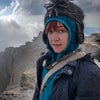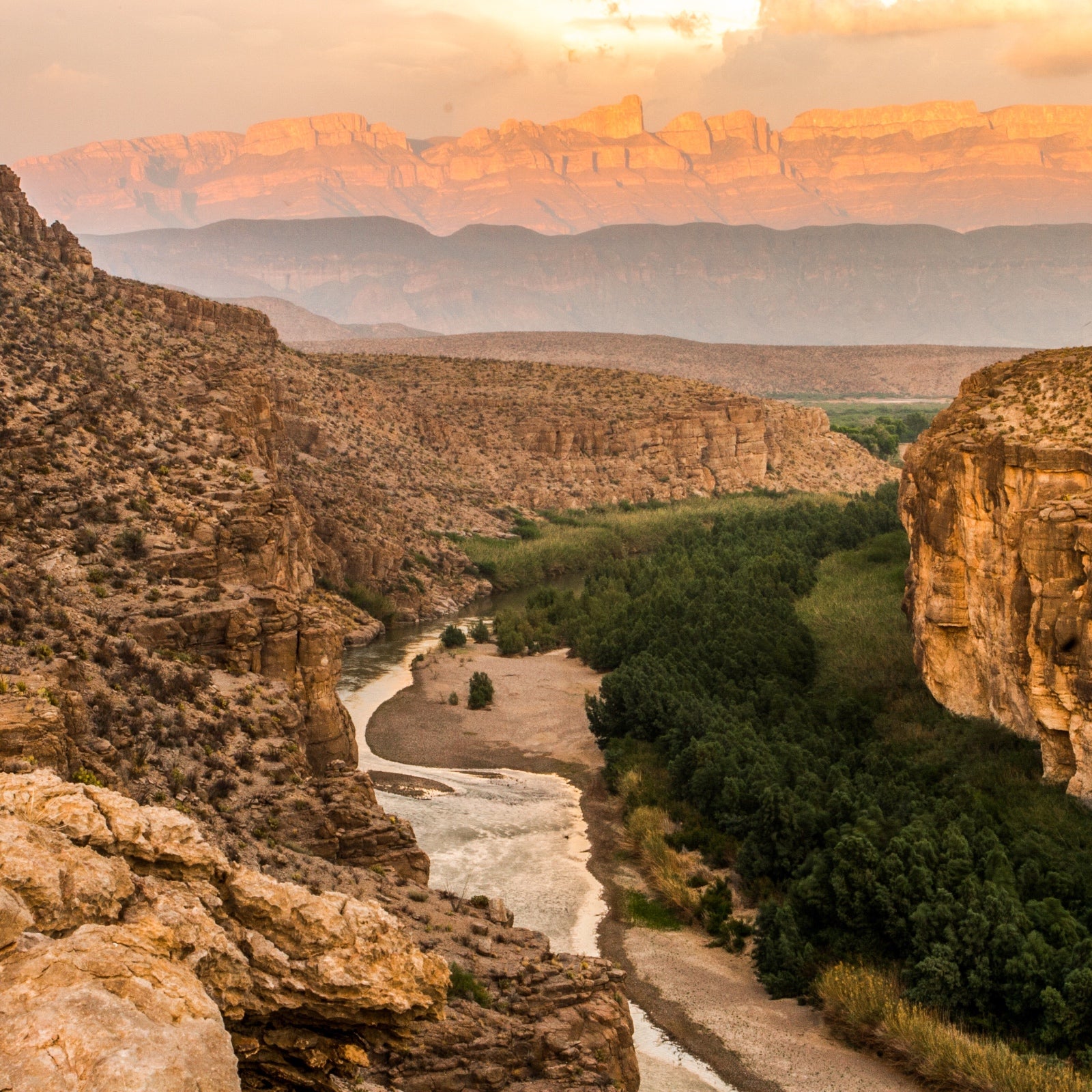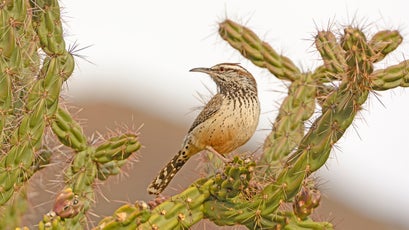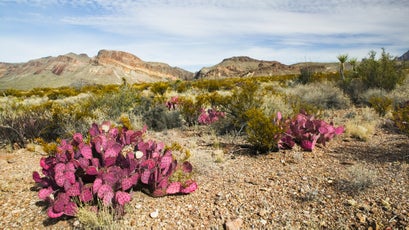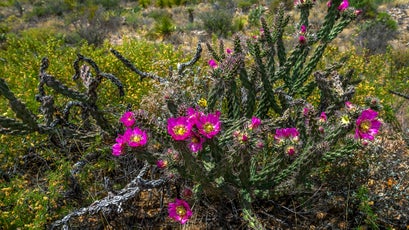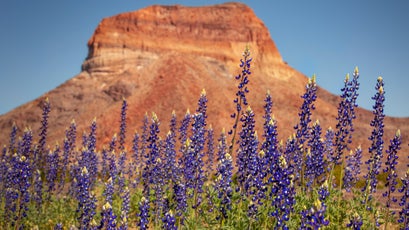In January of 2020, I packed my entire life into an old Ford Transit minivan, kissed my partner goodbye, and set off to visit every national park in the United States. Along the way, I penned a series of dispatches for ���ϳԹ��� and about all my wild experiences.
Like the time an enormous black bear approached my picnic table in Kings Canyon, California; panicked, I waved my arms overhead like a lunatic and tap-danced on the wooden surface until it finally turned and sauntered into the woods. Or the time I came down with scarlet fever in the Alaskan bush and lolled around in my tent with a high fever for two days, until my bush plane’s return. Or the four days I spent trapped in a Tacoma motel room, waiting out the smoke of the worst wildfire season in U.S. history, before visiting North Cascades.
My year exploring the parks was never boring. In fact, it’s been the biggest adventure of my life.
America’s national parks have some of the most jaw-dropping scenery on the planet. In addition to the iconic topography—hoodoos and canyons in the Southwest, massive trees in California, and geysers that shoot water up hundreds of feet—I’ve also been awed by the green-black waters of Congaree; the magnificence of Denali, North America’s highest peak; and fall foliage in Acadia.
But my absolute favorite park? I get that question a lot, and the answer often surprises people.
My Favorite National Park Is Big Bend, in Texas
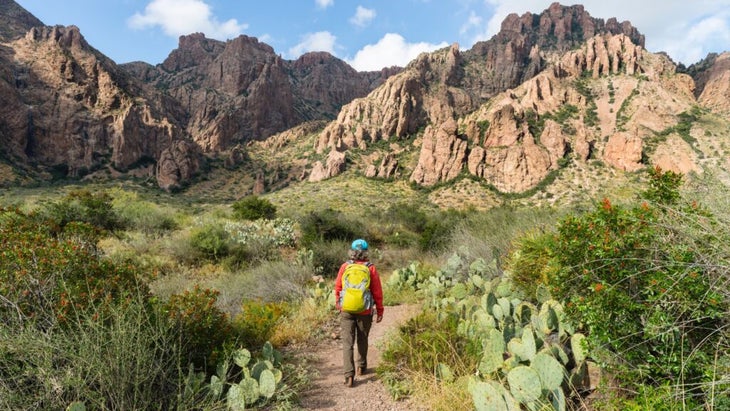
I grew up in the suburbs of Houston—in a region I best remember as flat and swampy—and then moved to Los Angeles for college. Because my family wasn’t very outdoorsy, I had no idea that an extraordinary expanse of conifer-topped peaks and narrow river canyons was a day’s drive away. In L.A., I could easily go for a day hike in the Hollywood Hills or spend the weekend exploring San Gabriel Mountains National Monument. The topography, and its proximity to it, started to change me.
Fast-forward 15 years and picture me rolling into Big Bend National Park, delighted and surprised. The pine-freckled Chisos Mountains towered before me. I spent four days roaming the park, canoeing the Rio Grande, soaking in natural hot springs, and trekking ridgelines that afforded panoramic views of the Chihuahuan Desert.
Although Big Bend happened less than two months into my transition to full-time vanlife, the impression it had on me lasted the duration of my trip. Unlike the most popular parks like Rocky Mountain, Big Bend’s natural attractions were unexpected. It was so off the beaten path. But there were many other reasons I fell in love with this West Texas gem. Here are a handful.
You Feel Like You Have Big Bend National Park to Yourself
Relative to its size—it’s the 15th-largest unit in the Park System—and variety of outdoor activities, Big Bend is one of our least-crowded parks outside of Alaska. In 2023, it welcomed just over 500,000 visitors to its 801,163 acres. Yosemite, in comparison, had 3.9 million visitors exploring just 747,956 acres. While visiting Yosemite Valley can feel like Disneyland, Big Bend felt like a serene desert refuge—which can actually be quite colorful and filled with animals:
Big Bend Is a Haven for Backcountry Campers
Want to hike in and pitch your tent at a dispersed site in the Chisos Mountains? Raft a portion of the Rio Grande to a solitary camping zone? Take your four-wheel-drive vehicle down a dirt lane to a with no one else around? There are even a few rugged off-trail wilderness areas where experienced backpackers can trek in and stay the night. The park makes it easy to for any of these, and they’re inexpensive (around $10 per night).
You Can Stargaze Like a Pro in Big Bend
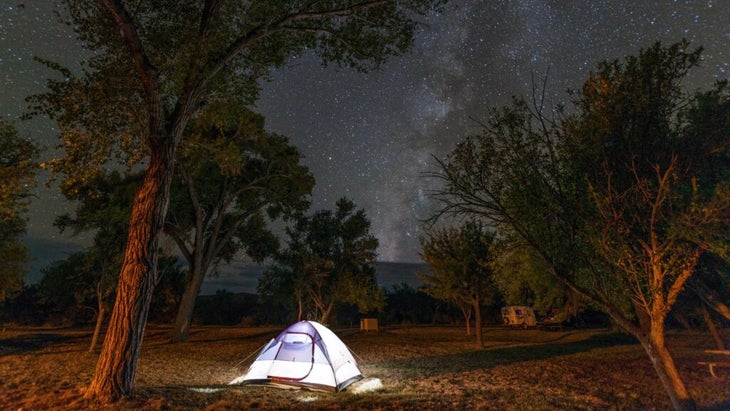
Big Bend International Dark Sky Reserve is the largest Dark Sky-certified place in the world. Nearby offer observatory access, and the park hosts throughout the year. While I visited at the end of winter, I was still dazzled by the twinkling Milky Way above my campsite one clear night.
The Canyons in Big Bend Are Totally Impressive
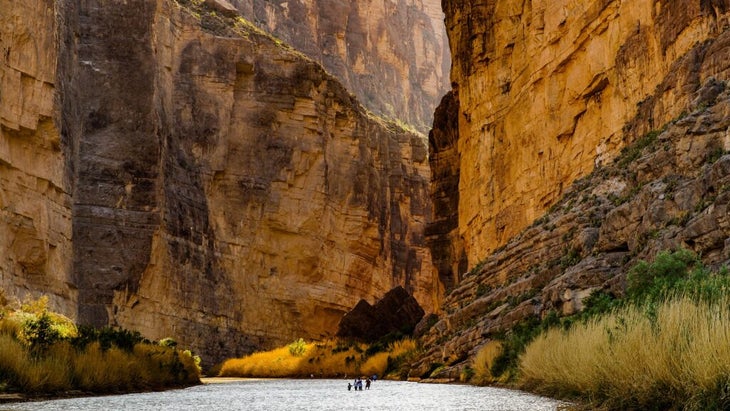
I was utterly wowed by the majestic canyons in Big Bend—and that’s saying something, given how many national-park canyons I enjoyed in the Southwest. I can recommend two short, easy hikes that take in some of the park’s canyon highlights:
- : To get to the trailhead, which is located on the western side of the park, drive the length of the view-studded Ross Maxwell Scenic Drive, passing rock formations that resemble mules ears and the lumpy, volcanic Tuff Canyon, and parking at the lot at the end of the road. I spent an evening strolling this 1.4-mile out-and-back trail, which winds along the bottom of 1,500-foot-tall canyon walls (a nesting site for many birds) bordering the Rio Grande.
- : On the eastern side of the park, this impressive 1.3-mile round-trip jaunt takes you near the Boquillas Del Carmen border crossing into Mexico. Go in the morning, as I did, for the best light on the caramel-colored limestone walls.
It’s worth noting that you can explore both of these canyons via boat. I signed up for a guided excursion with (from $82) and can recommend this local outfitter. It offers a range of options, from half-day to multiday trips.
There’s a Great Hot Springs Site in Big Bend for Post-Trek Soaking
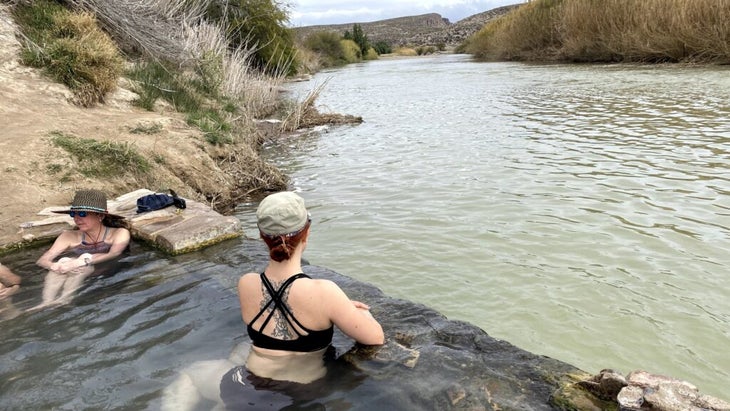
After three days of nonstop park exploration, my muscles were sore, so I was happy to hear about a two-wheel-drive-accessible hot spring inside Big Bend: Boquillas Hot Springs.
The stone ruins of an early-1900s resort surround this naturally fed soaking pool, tucked against the cool water of the Rio Grande. From the Chisos Basin Visitor Center, head east for 28 miles; the last two miles are down the bumpy, dirt Hot Springs Road, which ends at a parking lot. From there it’s an easy half-mile hike to the springs, where 105-degree pools and great views across the river into Mexico await.
Big Bend’s Gateway Town Is Weird, Wonderful, and Definitely Worth a Stop
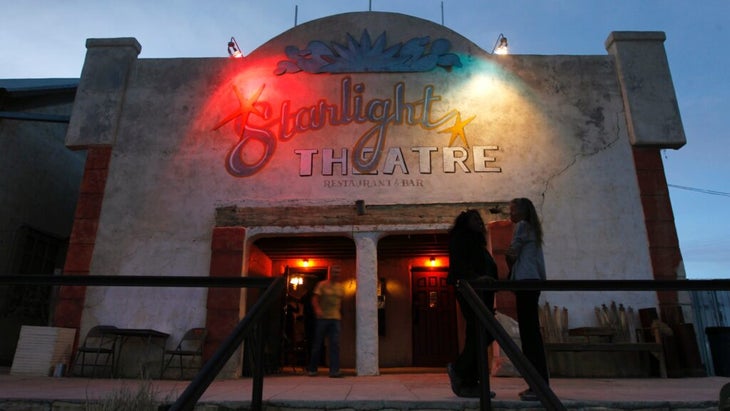
Big Bend boasts one of the coolest gateway towns of any national park. From its sincerely sweet (from $249) and curious ghost town to some of the finest smoked meats I’ve ever eaten, found at DB’s Rustic Iron BBQ, and splurge-worthy post-hike massages at Desert Lotus Healing Arts, tiny Terlingua offers loads to do when you’re not exploring the park.
My Runner-Up: Gates of the Arctic National Park and Preserve, Alaska
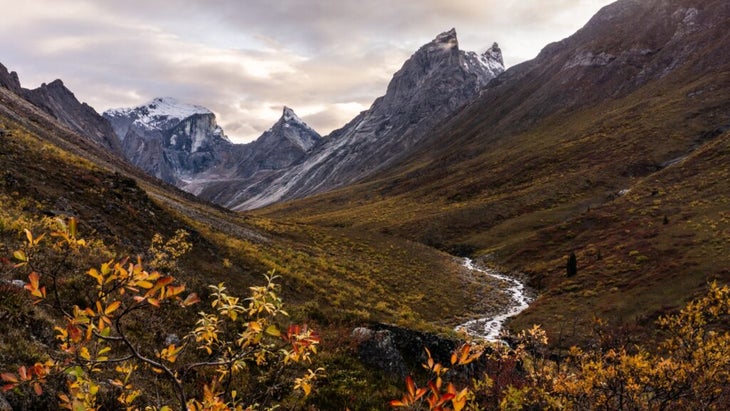
With so many wildly different U.S. national parks, it’s nearly impossible to choose just one favorite. Though Gates of the Arctic is exceedingly tough to get to for most travelers, that remoteness allows for incredible magic. Here’s why I loved it.
Gates of the Arctic National Park Is Massive
Boasting nearly 8.5 million acres, Gates of the Arctic is the second-largest national park in the country. That’s really hard to fathom. It’s larger than ten Yosemites or eight Glaciers. Mountains and rivers seem to spill out forever here, and I felt like I had a gigantic playground all to myself.
A Trip to Gates of the Arctic Is a True ���ϳԹ���
No roads or trails cut through Gates of the Arctic, so plan on hiking, boating, or flying in by bush plane. This remoteness means that solitude is easy to find and wildlife live in a setting largely removed from human contact, giving travelers a true wilderness experience. I sincerely relished those aspects after having to deal with the bus schedules of Denali.
I signed up for a guided group expedition with , which is based in Anchorage and offers all kinds of epic hiking and rafting trips into the park (from $6,195)
Gates of the Arctic Is an Incredible Place for Wildlife-Watching
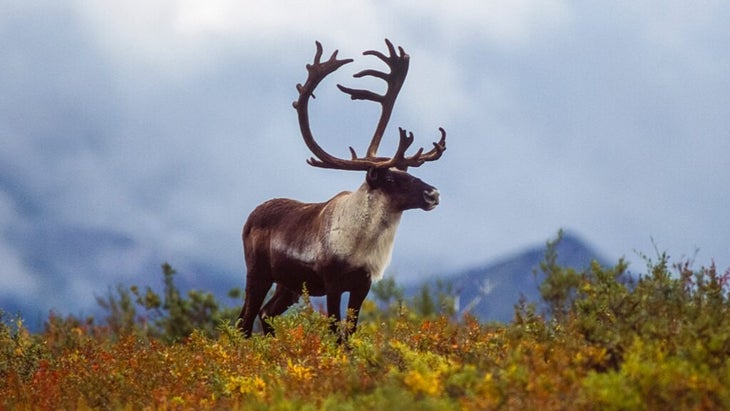
Loads of charismatic megafauna, like grizzly bears, caribou, musk oxen, and Dall’s sheep, call Gates of the Arctic home. Many of the area’s 500,000-member Western Arctic caribou herd migrates through the park each fall.
To Say the Gates of the Arctic Scenery Is Spectacular Is an Understatement
The Arrigetch Peaks are, hands down, one of the most beautiful landscapes I’ve ever laid eyes on. A bush plane dropped my guide and I off near the Arrigetch Valley, on the banks of the Alatna River, and we set off on a 12-mile off-trail hike to these jagged pinnacles, which are part of the central Brooks Range. We slept in tents and spent days exploring the granite slopes and aquamarine alpine lakes in the area. While this experience might not be for everyone, anyone willing to put in the miles will experience sublime natural beauty.
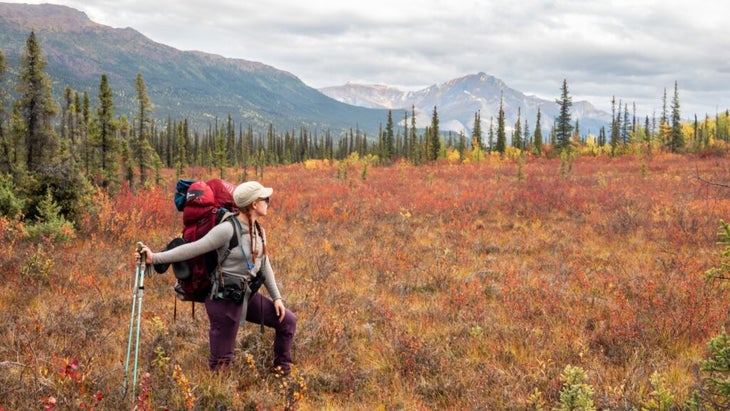
Frequent ���ϳԹ��� contributor Emily Pennington wrote a book about her experience of visiting all 63 national parks: , published in 2023. Next year she plans on returning to Gates of the Arctic to raft the Noatak River.

